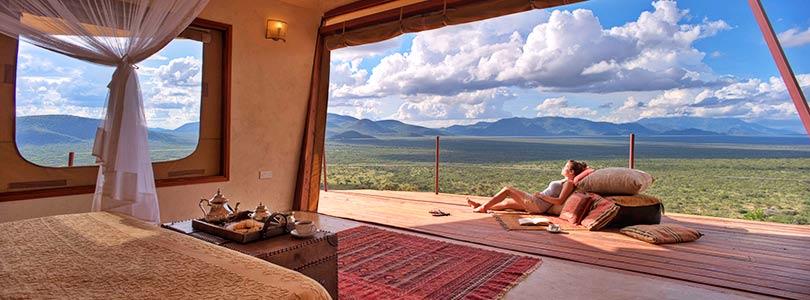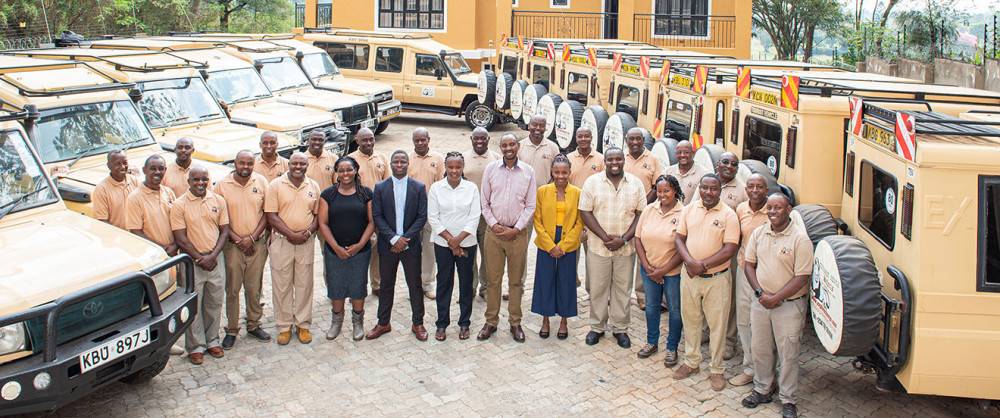Best News On Deciding On Kisite Mpunguti Marine
Wiki Article
What Transportation Arrangements Should I Be Aware Of Prior To A Vacation In Mombasa Kenya?
To ensure a pleasant and hassle-free vacation in Mombasa Kenya, it is important to understand the options for transportation. Be aware of these essential transport arrangements:
1. How to get to Mombasa
By Air: Moi International Airport (MBA) is the main airport that serves Mombasa. It is the hub for international and national flights. Mombasa is accessible by numerous major airlines.
By Train by Train Madaraka express, operated by Kenya Railways provides a comfortable and modern train service from Nairobi to Mombasa.
Bus: A variety of bus companies offer services between and to Mombasa, including Modern Coast and Coast Bus.
2. Local Transportation in Mombasa
Taxis & Ride-Hailing Services are easily accessible. Ride-hailing services like Uber and Bolt operate in Mombasa offering convenient alternatives to travel around.
Three-wheeled vehicles, known as tuk-tuks, provide an inexpensive and popular way to move around in the city. They are great for short distances.
Matatus are minibuses for sharing that travel on particular routes. They are the most frequently utilized mode of transportation. It is an affordable alternative, however it can be very crowded.
Motorcycle taxis, also known as boda-bodas, are available to offer quick and simple transport for small distances.
3. Car Rentals
Self-Drive Car rental is offered at airports and within the city. Car rental firms that are both local and international have a large selection of cars. Keep in mind the local driving regulations and rules.
The chauffeur-driven service is available for those who do not wish to drive.
4. Ferry Services
Likoni Ferry This ferry connects Mombasa's island to the city's southern mainland. It is necessary for pedestrians to reach the southern beach. Cars have to pay.
5. Excursions and Day Trips
Tour Operators provide excursions to popular tourist destinations like Mombasa Marine National Park Fort Jesus and the nearby beaches Diani and Nyali. These tours typically include transportation.
Public Transportation: If an individual traveler, a combination of matatus (tuk-tuks), taxis, and tuk tuks can assist you reach the various places of interest.
6. Cycling and Walking
Bicycle Rentals: A few areas, especially along the coastal beaches, offer bikes for rent to explore the area.
Walking is possible in Mombasa. Particularly in the Old Town or along the beach.
7. Travel Tips
Only use taxis that are trustworthy and avoid public transportation in the evening. Be aware of your personal belongings.
Negotiation: When using taxis or Tuk-tuks, discuss the cost before you begin your journey, as meters aren't widely employed.
Traffic: Be prepared for heavy traffic in peak times, particularly in the vicinity of Likoni Ferry and central business district.
If you are aware of the many transport options and have made the necessary arrangements, your holiday will be hassle-free. Have a look at the most popular kenya holiday packages for site advice including cheap kenya safari packages, safari and tours, afri safari, safari excursions, safari and tours, safari excursions, afri safari, tours and safaris, kenya safari holiday packages, african safari tours and more.

What Are The Weather-Related Considerations I Should Be Aware When I Am On Vacation In Mombasa?
When you plan a trip to Mombasa, Kenya, understanding the local weather patterns is crucial to packing properly and getting the most of your trip. Here are some important factors to consider:
1. Climate Overview
The climate in Mombasa is tropical and humid all through the year. Expect warm weather with temperatures ranging from 24degC (75degF) up to 32degC (90degF).
2. Seasons
It is the humid and hot season between November and April. This is also the most popular tourism season, especially in the months of December and January.
Long Rains April-June The season of rain is characterized by heavy rains and thunderstorms. It is often difficult to drive on roads that are muddy. The low season is here.
Cooler season (June to October): The temperatures and humidity levels are the lowest in this period. The general weather is pleasant, making it ideal for outdoor activities.
Short rains (October October - November) Short Rains (October - November): These are brief showers of rain that are less intense. The rains will usually be only for a short time, but will be followed by some sunshine.
3. Tips for packing
Lightweight clothing: To remain cool and dry in humid weather Pack lightweight, breathable clothes such as linen or cotton.
Rain Gear - If travelling during a rainy time, make sure to bring an outfit with a water-resistant coating, an umbrella, as well as waterproof footwear.
Sun protection wearing a hat with a broad brim, wearing sunglasses and wearing light clothes to cover your skin all help protect you from sun.
Swimwear: Don't forget your swimsuits to enjoy the beach and pool at your hotel.
4. Weather-specific Activities
Beach Time: The most popular season to go on the beach is from June until October in the months when the weather is pleasant and the conditions for swimming are favorable.
Water Sports: For diving, snorkeling as well as other water sports, the clear and calm waters from November to March are perfect.
Wildlife viewing. The cooler months (June-October) are also great for safaris and wildlife trips because the temperatures are less uncomfortable.
5. Health Concerns
Hydration: The hot and humid climate requires you to be well-hydrated. Drink plenty of fluids, particularly when you are spending time outdoors.
Heat-related Infections: Know that heat exhaustion and heatstroke can occur. Wear loose-fitting clothing and avoid strenuous physical activities during peak temperatures.
6. Travel Adjustments
Travel during the rainy seasons It is important to be ready for travel disruptions when you travel during this time. Certain roads might be closed and outdoor activities might be limited.
The delay of flights due to tropical storms and rain could cause delays on flights. Be aware of your travel plans and make contingency plans.
7. Environmental Concerns
Natural Risks: Be aware the potential for flooding during heavy rains. Be aware of the current weather conditions, and take local advice regarding safety.
Remember to be aware of the tides. They can be very different. Be sure to check tide schedules for safety while beachcombing and swimming.
Understanding these weather considerations will allow you to plan your trip and prepare appropriately, so that you can enjoy your trip in Mombasa without fear of danger. Read the recommended best holiday destinations in kenya for site examples including kenya safaris and tours, travel tours in kenya, holiday packages mombasa, travel tour companies, trips to kenya africa, african safari excursions, trips to kenya safari, trips to kenya africa, kenya safaris, safari company kenya and more.

What Safari Planning And Tour Planning Must I Know About When Traveling In Mombasa Kenya?
A safari or a tour in Mombasa will require careful planning to make it an unforgettable trip. Remember these essential aspects:
1. The Most Reliable Safari and Tour Operators
Reputation: Choose a tour company with a solid reputation. Find tour operators who are accredited by the Kenya Association of Tour Operators.
Review packages from various tour operators. Packages can range from budget to luxury and differ in terms of length accommodations, as well as the included activities.
Guides. Ensure the operator uses skilled and experienced guides, preferable certified by relevant bodies.
2. The most sought-after Safari Destinations Starting from Mombasa
Tsavo National Park The largest game reserves in Kenya which is divided into Tsavo East and Tsavo West. The park is renowned for its wide variety of wildlife, including rhinos and elephants and lions.
Amboseli National Park: Famous for its huge herds of elephants as well as stunning panoramas of Mount Kilimanjaro.
Shimba Hills National Reserve. It is located close to Mombasa. This reserve offers stunning views and the possibility of seeing rare species like the Sable Antilope.
Maasai Mara. Although further away from Mombasa, the Great Migration is celebrated in this area and provides an unforgettable wildlife experience.
3. Safaris and Tours - Types
Game Drives. Traditional safaris typically involve 4x4 game drives that offer intimate encounters with wildlife.
Walking Safaris: Walking tours with guides are a unique opportunity to get out in the wilderness and to learn about small flora and fauna.
Balloon Safaris are available in certain parks, such as the Maasai Mara. They give you the opportunity to see wildlife from a bird's eye view.
Beach and bush combos: Combine time at the beach with a safari to create an unforgettable experience.
Cultural Tours: include visits to local villages or historical sites like Fort Jesus and Mombasa Old Town.
4. Timing and Duration
The best time of year to Visit: The dry period (June through October) is ideal as wildlife gathers around watering points. The Great Migration in the Maasai Mara usually occurs between July and October.
The duration of safaris can vary from day trips to week-long adventure. Consider your schedule and the amount of time you want to spend in the bush.
5. What to Pack
Clothing Light comfortable, breathable clothing that is neutral colors. Wear the long sleeves as well as pants to provide evening protection against mosquitoes.
Shoes for walking Boots for walking that are comfortable or shoes are essential, especially for walking safaris.
Accessories: Wear a wide cap with a brim and bring sunglasses, sunscreen and insect repellent.
Gear: Binoculars aswell as a good digital camera that has batteries and memory card are essential for viewing wildlife.
Medication: Take any medication that you require, and bring malaria-fighting medications as well as a basic first aid kit.
6. Health and Safety
Immunizations: Ensure that you're up-to-date with your recommended vaccinations.
Prevention of malaria Prevention of malaria: Wear long sleeves at night, use insect repellent and take anti-malarial medication.
Water and Food Safety: Drink only bottled, pure water. Restaurants with an excellent reputation.
7. Costs and Payments
Budget your expenses: Safaris can cost lots of money, so make certain to plan it carefully. Consider all-inclusive package deals that include accommodation, meals and even activities.
Payment methods: The majority of operators accept credit card as well as bank transfer. Verify the payment options available including deposits that are required.
8. Environmental and Ethical Besorgnization
Eco-friendly Operators: Select companies who are committed to sustainable practices.
Wildlife Protection: Be respectful of the wildlife by keeping a secure distance from animals and not causing disturbance. Avoid buying products made with endangered species.
9. Travel Insurance
Insurance Coverage - Ensure that your travel policy includes medical emergencies as well as possible disruptions to travel.
10. Booking and Confirmation
Advance booking Safaris are very popular and are often booked up fast particularly during peak times. Make reservations in advance.
Confirmation: Talk to your tour guide to confirm all information including pickup times, itinerary and contact details.
By considering these aspects it is possible to plan an organized and enjoyable tour or safari starting from Mombasa and enhance your time in Kenya. Check out the recommended Diani Beach taxi for blog recommendations including mombasa safari, kenya safari tours, mombasa safari packages, kenya safari holiday, travel & tours company, afri safari, safari excursions, kenya mombasa holiday packages, kenya tourism, mombasa tour packages and more.
